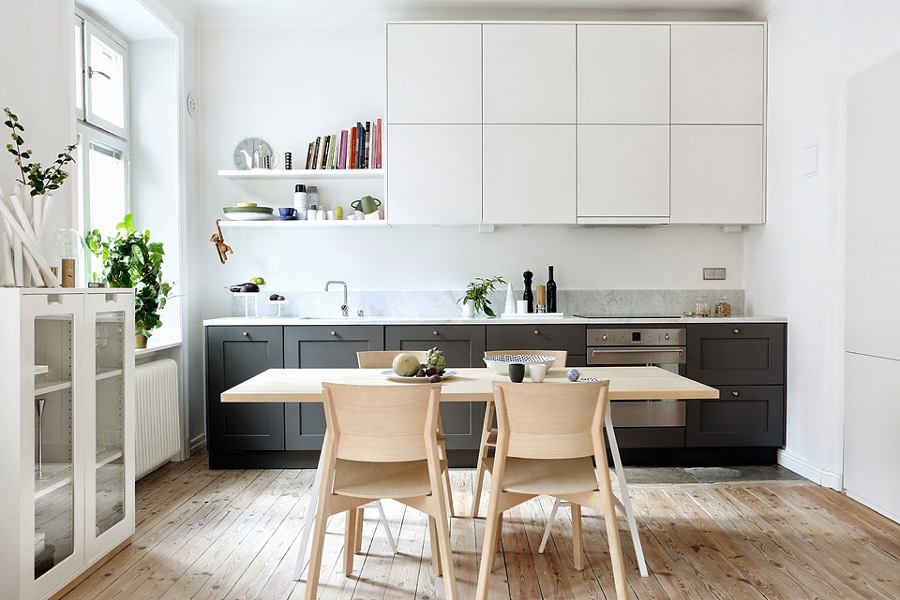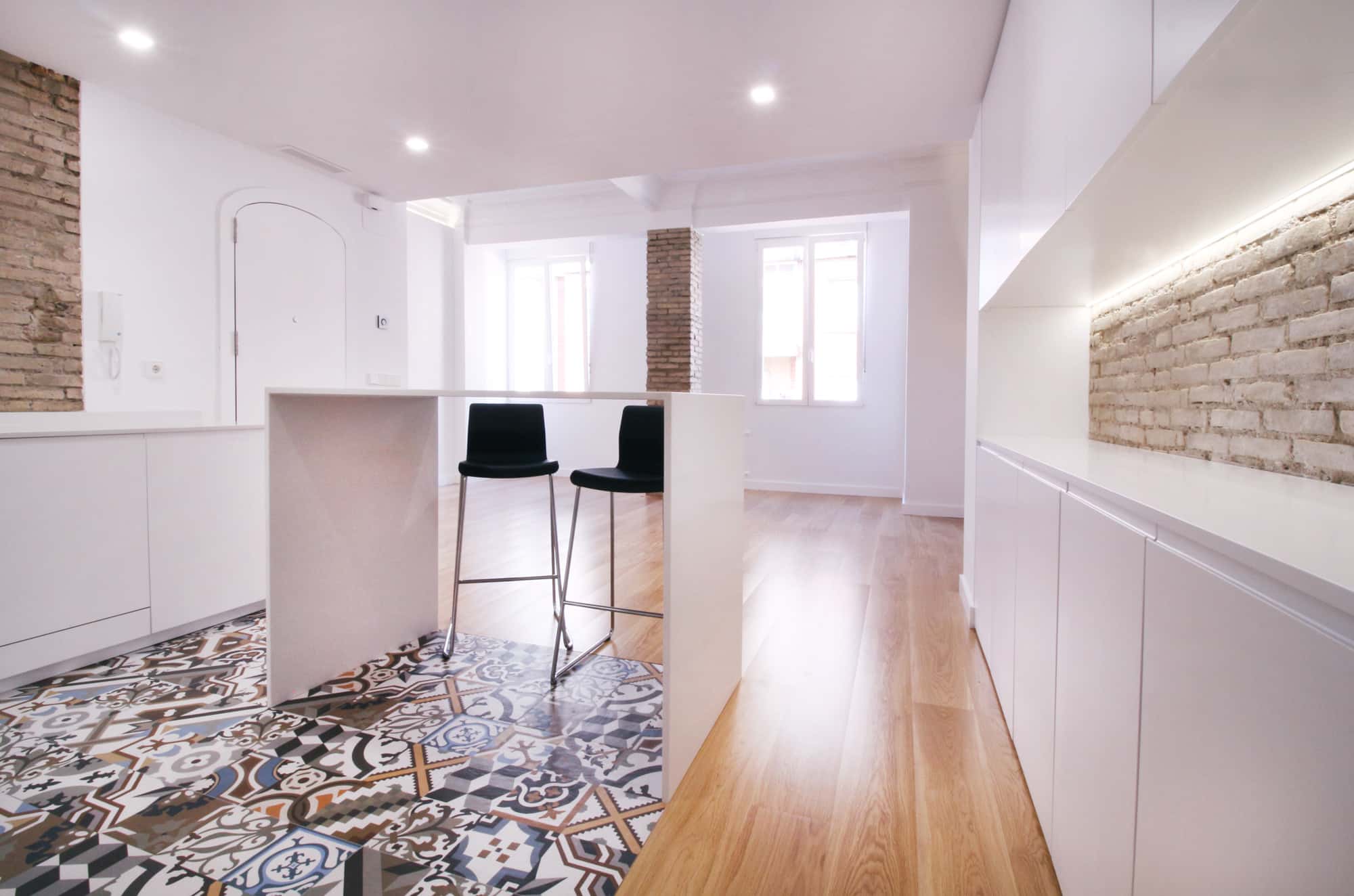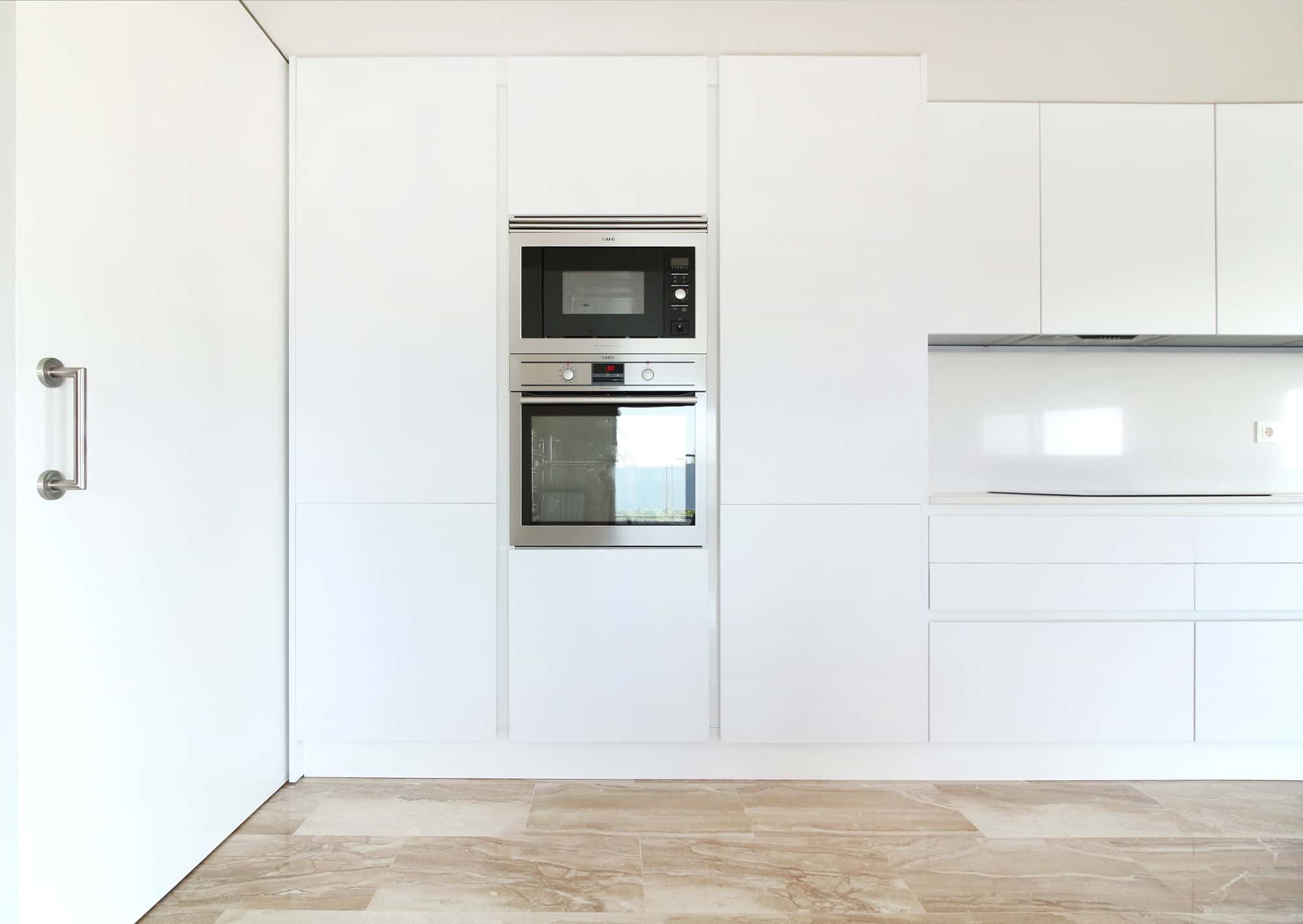How to choose the best floor for your kitchen

Choosing what type of soil we want for the kitchen is not a minor matter. The kitchens have become authentic spaces for living together. For this reason, what we put will have to withstand a lot of traffic of people, blows, humidity, changes of temperature and dirt. All that on a daily basis and also, we hope that over the years it will continue to look like new. Is it too much to ask?
When designing this type of space we do not only have to think about the functionality and practicality of the project. It is also important to project an aesthetic and cozy space with the materials we choose. There are dozens of options at your fingertips, but not all materials are the same in terms of stamina, beauty and price. Let's see some options!
Hydraulic Tile
The traditional hydraulic tiles are decorative tiles of pigmented cement that owe their name to the process that is used for their manufacture, in which metal moulds are used to apply the colors that are fixed to the cement base using a press Hydraulic.
Nowadays, new stoneware materials have been created with which these traditional mosaic floors can be imitated and also to design a different type of soils that are much more modern and that rescue the original idea, but with touches much more contemporary and current.
Advantages: There are as many designs, colors and shapes as there are images. Its manufacture is simpler than the original tiles, which also allows to lower the price in many cases. The techniques even offer the possibility of reproducing more worn motifs than others, which gives an aged appearance very appropriate for this type of floors. As if it was original. Currently this type of floor is also manufactured in vinyl finish (PVC), there are even manufacturers of wood and laminates that offer these reasons. The imitation ceramic tiles to the hydraulic are easy to clean and maintain and the thickness of the pieces is smaller than that of an original hydraulic tile.
Disadvantages: It is not advisable to install them on wood. The pallets, parquets, vinyl floors, etc. They are usually placed on cement slab so, if we remove them, we remove the glue residues and we clean them, they can be a suitable base to place the hydraulic tile. Keep in mind that the hydraulic tile and the grip material will make the floor rise about two centimeters in the best of cases, which will create an uneven unevenness with the rest of the flooring, difficult to hide with a flashing, and that will surely make it necessary to brush the doors. So it would be convenient in any case to remove the screed left bare the base screed.
Porcelain Stoneware
Ceramic tiles with very low water absorption, dry pressed or, to a lesser amount, extruded, not glazed or glazed and manufactured by single firing. They are used for exterior or interior floors, commercial and even industrial, and for cladding of facades and interior walls.
Advantages: Porcelain tiles are harder and thicker than other materials, so they will not suffer wear and tear over time. They are easy to clean, there are many products that can be used to keep the appearance of your floor, but they are not necessary. The passage of a simple mop is sufficient for its maintenance. It does not require waxing, polishing, or sealing. They have high breaking strength. Porcelains contain less clay and more feldspar (mineral). They're also pressed for more pressure.
Disadvantages: Porcelain tiles are denser than ceramics, so they are generally heavier and harder to cut and perforate.
Ceramic Tiles
Ceramic tiles are usually made of clay and have a layer of enamel. They are available in a wide range of shapes, sizes, textures and colors and even imitate other materials such as wood.
It is advisable to use ' rectified ' tiles. They are cut tiles after passing through the oven, so that the edges are uniform and smooth. If the edges are not straight, we will need thicker grout lines for the installation and the soil is dirtier, especially if the grout is white.
Advantages: Ceramic tiles are cheaper than porcelain as well as hygienic and easy to clean. They are also suitable for radiant heating.
Disadvantages: They are not as strong as the porcelain tiles, so it is essential to place them on a solid and smooth surface. In addition, the possible cracks are seen more as they protrude more in the enamel. They are cold-touch, they are not comfortable to walk barefoot.
Stone
The classic stone is a very popular soil for many reasons. Some of the most common options are limestone (in the photo), travertine marble, granite or slate. All of them have a natural and unique beauty since each block is different and the subtle variations of tone add depth to the whole.
You should know that the more irregular the stone, the harder it is to fit the blocks. If you choose a very rustic tile with jagged edges, the grout lines will be thicker and will get dirty easily. On the other hand, a matte and polished surface transmits a more modern image.
Advantages: Stone is a beautiful, timeless and elegant material that always arouses admiration. It is also solid, durable and easy to maintain. It can be used with radial heating and in fact it is a material that works well as a heat conductor. The stone captures the heat and retains it for about an hour.
Disadvantages: The stone is not very pleasant to walk barefoot and it may be uncomfortable to stand for long periods of time on this type of surface. It is very hard, if you drop a plate or a glass will surely break. If you don't have radial heating, it's cold, and it's also rough. Very irregular surfaces are difficult to clean. A stone floor needs a hard, rigid and level base, it cannot be placed on a floating screed.
Solid Wood

No copy, no matter how good, is able to match the beauty of the real wood. Available in a wide range of shades and textures, fits well with any style, from a contemporary apartment to a country house, and will never go out of fashion. A uniform texture is contemporary, while knots and irregularities go better with a more traditional set.
The parquet supports the passage of time well. As for the finishes better the oil or the wax before the lacquering to achieve a natural appearance. To clean the floor the best is a moist cloth better than a mop.
Advantage: The wood is very nice to walk barefoot as it is flexible and warm to the touch. It is renewable, recyclable, beautiful, solid and durable. It can be sanded and will be as new, and can also be dyed in countless shades.
Disadvantage: It is usually discouraged to put solid wood in humid areas, the solid wood slats move, especially if the environment is humid or if the soil is often scrubbed, so it is not advisable to install it in the kitchen. You need a base, which makes the installation more expensive. In addition, they are easily stained and scratched and can accuse the passage of time in the busiest areas, for example in front of the sink or the vitro. It is true that wood floors can be sanded, but it is a rather cumbersome procedure.
Laminated Pavement

The trick of the laminate floor is to bet on high quality slats, which are hard, resistant and support well the passage of time, stains and sun. The wood-imitation finish is not the only option, laminated floors can mimic ceramic tiles or slate. They are covered with a transparent layer that makes them more resistant to the passage of time and to scratches. Below this layer is the high definition image that can represent practically any material, from wood to marble.
Advantages: There are very realistic designs with different textures. The price of laminate flooring is competitive. It does not require much maintenance, resists moisture and can be installed on an existing floor. "
Disadvantages: You need a lower layer, which is sometimes fixed to the laminate and sometimes not (consult before buying). Scratches can't be fixed. Not all laminates are compatible with radial electric heating, although they can be installed on wet piping systems.
Resin Flooring

Resin is a more and more popular choice for kitchen flooring. The resin can be installed on the kitchen floor and the finish is completely uniform. It is easy for the soil to regain its splendor past the years. Just sand it and then apply a couple of layers of the product and it will be as new. And if you prefer another color, you only have to choose your favorite from the full range available.
There is gloss finish, silk and matte. The floors with glossy finish, especially if they are clear, reveal all the marks, while in a matte floor less imperfections will be seen.
Advantages: The resin is warm to the touch, hypoallergenic, resistant to water, hard and easy to clean with warm water and soap. It is available in all RAL colours and in different patterns if you want to personalize it even more. It can be poured over concrete or wood and is compatible with radial heating.
Disadvantages: It does not have the depth or personality of the wood or stone and is easily scratched. Although it can be repaired by filling in the cracks but for this it is necessary to sand and add a layer to the whole surface because otherwise the cracked crack will be seen even more than before. The stains have to be cleaned quickly, otherwise they won't go away.


